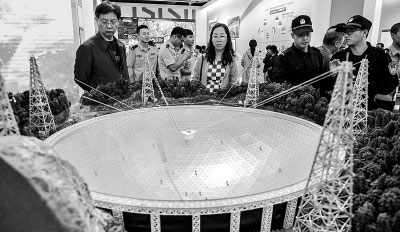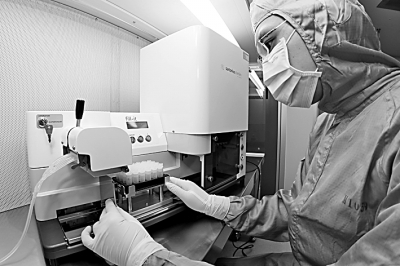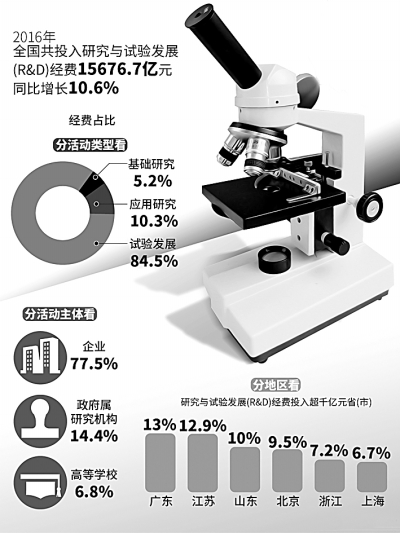


editorial comment/note
With the outline of the national long-term scientific and technological development plan (2006— With the implementation of "2020)", China’s investment in scientific research and discipline construction is increasing, the pace of development is obviously accelerated, the innovation ability is gradually improved, and its international influence is expanding day by day. A series of reports on discipline development research issued by China Association for Science and Technology (2014— 2015) shows that in recent years, China’s discipline construction has achieved a number of important achievements, the overall level has been greatly improved, and many key scientific and technological indicators have entered the forefront of the world. We are changing the world R&D pattern.
In the 21st century, the rapid development of the new scientific and technological revolution has promoted the intersection, integration, infiltration, differentiation and development of disciplines, and given birth to new major breakthroughs.
In recent years, China’s investment in discipline construction has been increasing, the discipline development environment has been continuously optimized, the discipline team has been growing, the discipline platform construction has been improved, and international cooperation and exchanges have been strengthened, which has effectively promoted the development of discipline construction and scientific research, and the basic disciplines and applied disciplines have also been continuously improved and developed. The innovation bred by interdisciplinary integration is gradually changing the discipline structure.
1. Significant achievements in discipline research.
Since the 21st century, the number of international scientific papers published by scientists in China has shown an alarming growth rate, which has aroused widespread concern in the international scientific and technological circles, which also reflects the development trend of various disciplines in China.
Extended version of the Web of Science Science Index of Thomson Technology Group — — ESI database divides all natural science fields into 22: clinical medicine, chemistry, physics, biology and biochemistry, molecular biology and genetics, neuroscience and behavior, materials science, engineering science, botany and zoology, environmental ecology science, immunology, pharmacology and toxicology, earth science, neurology and psychology, agricultural science, microbiology, space science, computer science and so on.
From 2005 — According to the data in 2015, some disciplines in China are already in the leading position in the world and have strong influence in the world. High-quality research achievements in 22 disciplines in China have increased significantly, among which the number of international scientific papers published in chemistry, physics, engineering science, material science and clinical medicine has exceeded 100,000, especially in chemistry, reaching more than 300,000; In addition, the achievements in the fields of biology and biochemistry, earth science and computer science are also very impressive. Among the 22 disciplines, China has the highest number of "articles are cited" in many disciplines, which is 18.63; Followed by molecular biology and genetics, with 11.55.
As of 2015, from the ranking of the number of published papers, 17 of the 22 disciplines in China are in the top five in the world, among which, China’s chemistry and materials science ranks first in the world.
In addition, the proportion of periodical papers published in the field of system science and system engineering in China increased from 23.5% in 2010 to 32.1% in 2015, making it the leading country in this field in the world.
At the same time, China’s frontier subject papers have made great achievements. In October 2015, the Literature and Information Center of Chinese Academy of Sciences and Thomson Reuters, an international professional information service provider, released the report "Research Frontier in 2015", which showed that China had core papers in 82 frontier disciplines, and the number of core papers in 16 frontier disciplines was the first. This shows that China has a strong frontier contribution and ranks among the world’s advanced in some important frontier disciplines.
In addition, the report also shows that there are 38 frontier disciplines in China, with 133, 68, 55 and 29 in the United States, Britain, Germany and Japan respectively. The 16 frontier disciplines in China ranked first in the number of core papers are from the fields of chemistry and materials science, physics, mathematics, computer science and engineering, agriculture, botany and zoology, biological science and earth science.
Among them, in the field of chemistry and materials science, China’s contribution to frontier disciplines exceeds that of the United States. Among the 19 frontier disciplines in this field, China ranks first in the number of core papers among the 9 frontier disciplines, and the United States has 7.
2. The application trend of basic research is obvious.
In recent years, the application trend of some basic research in China is obvious. The transformation period of basic research results is shortened, and the boundary between basic research and applied research is increasingly blurred.
For example, in the field of mathematics, the numerical solution of developmental partial differential equations has become a rapidly developing discipline in the field of applied mathematics, and it has important applications in aerospace, electromagnetism, petroleum exploration, semi-conductor device simulation, water pollution treatment, ocean and meteorology. The research on numerical simulation methods of these mathematical and physical equations belongs to the frontier research field of science and engineering calculation, and the design, analysis and application of high-order precision numerical algorithms for these problems have always been a challenging topic.
From the specific disciplines, basic disciplines such as biology, life science, chemistry and earth science have made remarkable progress in the application of basic research.
Take the "973" project with Zhao Guoping, the chief expert of Shanghai Academy of Life Sciences, Chinese Academy of Sciences, as an example. Focusing on the key scientific issues and related technical difficulties such as the design principle, synthesis and assembly, module construction, standardized library building and integration and adaptation mechanism in chassis cells, this project focuses on the artificial heterologous synthesis of terpenoids, and has made some important progress, especially in the important medicinal and edible terpenoids such as rare ginsenoside CK, stevioside and tanshinone precursor rust alcohol. In addition, significant progress has been made in the mining and synthesis technology innovation of component modules.
The application of synthetic biology technology in tumor research is just beginning at home and abroad. The "973" project "Basic research of synthetic biological devices in bladder cancer intervention", headed by Professor Cai Zhiming of Shenzhen University, applied synthetic biology technology in tumor treatment research on the basis of system biology. The project discovered some key genes and pathways of bladder cancer, and based on the analysis of relevant gene network information, the quantitative controllable engineering system was used to characterize the commonness of complex events in the occurrence and development of bladder cancer, and many potential compound targets for bladder cancer identification and treatment were excavated.
In physics, near-field optical tweezers is a new technology based on near-field optical theory, which can capture and manipulate particles stably. Compared with the traditional far-field optical tweezers based on single beam gradient force, near-field optical tweezers overcome the limitations of optical resolution diffraction limit and thermal effect, and can capture and manipulate nano-sized particles. Optical tweezers are widely used in biology, physics and chemistry because of their unique non-contact and non-destructive characteristics, especially in biology, which has been used to study cells, viruses, bacteria and DNA molecules.
In chemistry, with the development of strategic emerging industries in China, new materials have become a hot research direction in recent years. By exploring the properties of different kinds of materials, practical problems encountered in production and life can be solved. Supercapacitor is a new type of energy storage element between traditional capacitor and chemical power supply. It has the advantages of short charging time, long cycle life, good power characteristics, wide temperature range, economy and environmental protection, and has been widely concerned in many fields. The development trend of electrode materials mainly has two directions: compounding materials, using the synergistic effect between different materials, compounding and doping between different materials, in order to obtain electrode materials with excellent performance; Nanometer materials not only have high specific surface area, but also can improve the transmission and diffusion paths of electrons and ions, thus improving the electrode performance.
In addition, China has accumulated a lot in some important frontier fields of basic research, and has also bred new breakthroughs in application, such as dark matter, discovery of new particles and survey of the sky in Hanoi, which is expected to deepen human understanding of the universe and then play an important role in human space exploration; In the fields of high temperature superconductivity and topological insulators, quantum memory, quantum regulation, mesoscale science, etc., it is expected to explore and discover new physical and chemical principles and produce application value; In the research fields of synthetic biology and brain science, it is possible to explore the origin of life and innovate scientific thinking methods.
3. The growth rate of disciplines related to people’s livelihood.
The development of information science and technology is in the ascendant, and it is the leading force of sustained economic growth; The rapid development of life science and biotechnology plays a key role in improving and improving the quality of human life; Energy science and technology continue to heat up, opening up new ways to solve energy problems; The rapid growth of new achievements in the field of environmental protection provides new solutions to environmental problems. Science and technology related to people’s livelihood have been vigorously developed, and the speed of application and transformation of science and technology has been accelerating.
Taking Chinese medicine as an example, Chinese medicine is a unique health resource in China and an important national industry, which is of great significance in the overall economic and social development. Historical reasons and the complexity of traditional Chinese medicine itself restrict the varieties of traditional Chinese medicine to become bigger and stronger. The secondary development of traditional Chinese medicine has led the innovative development direction of traditional Chinese medicine industry, promoted the technological upgrading of traditional Chinese medicine industry, played a significant role in ensuring the success of medical reform in China and promoting the development of biomedical industry, and produced significant economic and social benefits.
For example, around the great demand of making Chinese patent medicines bigger and stronger, and promoting the transformation of Chinese traditional medicine industry to science, technology, efficiency and economy, the research group of Academician Zhang Boli of Tianjin University of Traditional Chinese Medicine took the lead in putting forward the research strategy of secondary development of Chinese patent medicines. After theoretical innovation, technical breakthrough and popularization and application, five core technical systems, such as accurate clinical positioning of Chinese patent medicines, systematic analysis of pharmacodynamic substances, network pharmacology, process quality optimization and digital whole-process quality control, were established, and a secondary development model of Chinese patent medicines was formed, which effectively promoted the technological upgrading of Chinese traditional medicine industry and enabled Chinese medicines to be upgraded. The project has completed the secondary development of 32 varieties of Chinese patent medicines, and the number of varieties with sales exceeding 100 million yuan has increased from 3 to 12. The project technology has been promoted in many places across the country and applied to nearly 100 Chinese medicine enterprises.
4. Interdisciplinary integration breeds innovation.
Interdisciplinary integration is the source of innovation. The intersection and integration of disciplines is often the frontier of innovation, which leads to major scientific discoveries and the emergence of emerging disciplines. At present, many disciplines are committed to cultivating the awareness of interdisciplinary integration, exploring effective ways of interdisciplinary integration, stimulating innovation vitality, improving innovation quality and comprehensively enhancing innovation ability.
Biomedical interdisciplinary subjects are constantly exploring and deepening in frontier fields. For example, Professor Wang Xiaoying from the Imaging Department of the First Hospital of Peking University, Zhou Diange’s research team from the Department of Orthopaedics of Peking University People’s Hospital and Zhang Jue’s research team from the Peking University Biomedical Interdisciplinary Research Center cooperated closely to innovatively develop a new type of flexible coil, which provided a brand-new idea for the design and imaging of magnetic resonance radio frequency coil and non-invasive perfusion functional imaging of lower limbs.
In recent years, China’s frontier interdisciplinary subjects have effectively promoted the system construction, discipline construction and team construction of disciplines in China by exploring the innovation of scientific research and management mechanism, promoting the construction of basic conditions, recruiting and introducing outstanding scientific research talents, and organizing academic exchanges and research project applications.
Under the framework of the Frontier Interdisciplinary Research Institute, each research unit, based on its own existing conditions and facing the development of science and technology and the needs of the country and society, organized multidisciplinary research forces to carry out research on frontier issues and tackle key problems in science and technology, won the support of various interdisciplinary research projects, and achieved some important research results.
(Reporter Zhan Yuan)